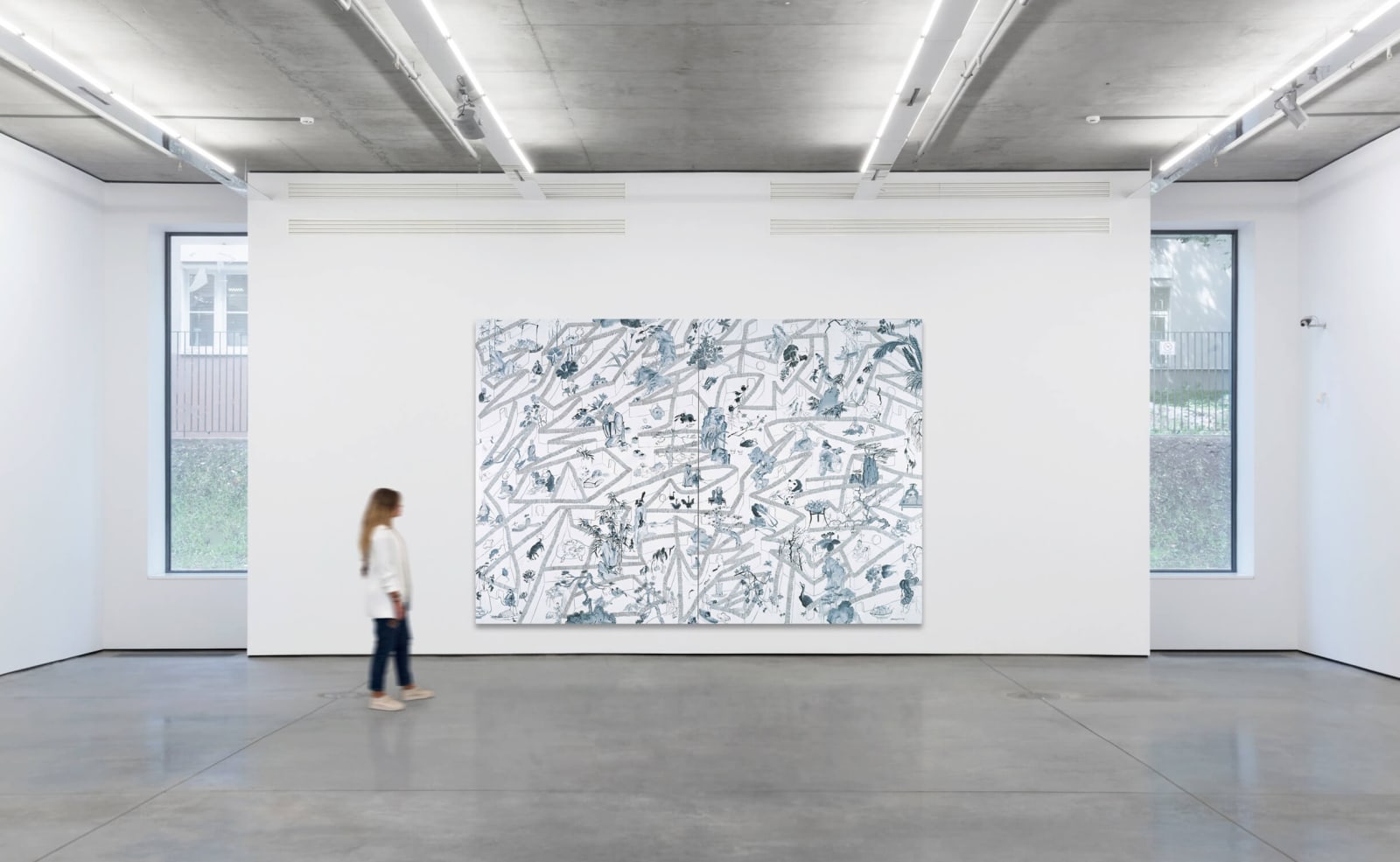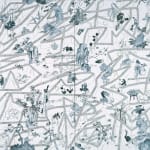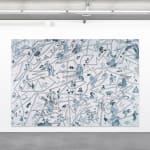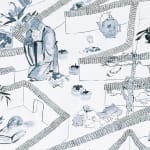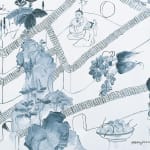Yue Minjun Daqing, Heilongjiang Province, China, b. 1962
300 × 400 cm
Further images
Yue Minjun’s Maze series marks a profound shift from his earlier works toward intricate compositions that explore themes of identity, history, and existential uncertainty. Rooted in the ancient Shan-Shui painting tradition, which has shaped Chinese art for over 1,500 years, Maze bridges classical aesthetics with contemporary social commentary. In these works, traditional elements—wood, stone, flowers, and birds—are woven into intricate labyrinths, creating an elaborate visual metaphor for the complexities of modern existence. His mazes function not only as physical spaces but also as psychological landscapes, where the search for meaning mirrors the disorienting realities of contemporary life. By reinterpreting traditional painting through the lens of modernity, Maze invites the viewer to consider the evolving relationship between past and present.
“I have tried to convey my feelings through painting, borrowing traditional cultural elements—wood and stone, flowers, birds… Chinese characters transformed into a labyrinth to interpret the inner world.”
– Yue Minjun




